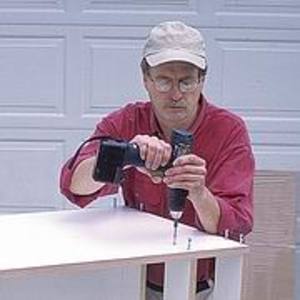
Synopsis: Rabbets and dadoes represent much of the joinery that cabinetmakers use every day, writes Sven Hanson. These strong, simple joints provide room for glue surfaces. Hanson explains step-by-step methods for cutting them using a router for case work and a tablesaw for drawers.
Judging by the attention that dovetails get, you’d think every craftsman cuts 200 of them a week. In reality, the rabbet, a joint with a single shoulder cut at the edge of a board, and the dado, a groove plowed inside the edge, are what many cabinetmakers use to join everyday case work.
On the evolutionary scale of joinery, the rabbet is a step above the butt joint, but it’s a big step. The shoulder of a rabbet adds additional glue surface to the joint and supplies mechanical support. A dado has two shoulders, adding even more strength. The shoulders of rabbets and dadoes aid in the assembly of case work. They align the pieces when dryfitting a case. You can check for size and fit before applying glue and clamps, which is a real boon in a one-man shop. In addition to their many applications in case work, these two joints also can be combined to produce simple but very sturdy drawers.
You can use hand tools to cut rabbets and dadoes, but these joints are usually machined with a router or a tablesaw. Each tool has its advantages. By choosing the right tool and using a few shopmade fences and jigs, you can cut these joints accurately and quickly. The techniques are as straightforward and uncomplicated as they are useful.
The rabbet
Maneuvering components smoothly over a tablesaw or a router table can be difficult when building large cases. Additionally, any slight cup of the workpiece will prevent the blade or bit from cutting to its full depth. That’s why I like using a hand-held router for cutting rabbets in the tops and bottoms of cases (see the photo at right). A router bit cuts cleanly and leaves a sharp, square inside corner that gives a very good surface for gluing.
Rabbeting bits come with guide bearings, but I usually remove them and guide the tool with an auxiliary fence. Bearings follow every dip in the wood, which could round the corner at the start or end of the cut.
My fence, which is nothing more than a straight block of wood clamped to the router base, provides a secure surface from start to finish, and it gives me an infinite range of adjustment. A fence also gives me the option of using straight bits to cut rabbets. When I make case goods, I usually make the depth of the rabbet half the thickness of the stock.
From Fine Woodworking #126
For the full article, download the PDF below:
Fine Woodworking Recommended Products

Marking knife: Hock Double-Bevel Violin Knife, 3/4 in.

Veritas Standard Wheel Marking Gauge

Olfa Knife





















Log in or create an account to post a comment.
Sign up Log in